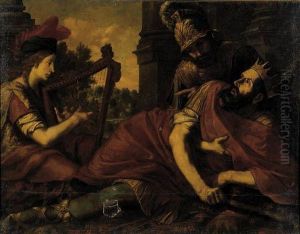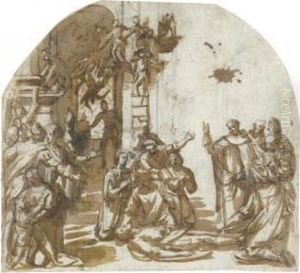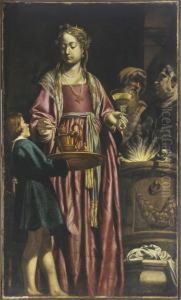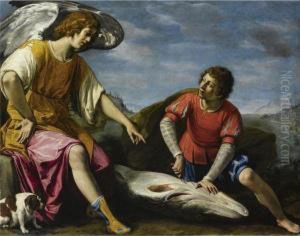Filipo Tarchiani Paintings
Filippo Tarchiani was an Italian painter of the Baroque period, born in 1576 in Florence, Italy. He is less well-known than many of his contemporaries, but he was an important figure in the Florentine art scene of the early 17th century. Tarchiani began his training in Florence, likely influenced by the Mannerist style that was prevalent during the late 16th century. However, as the Baroque style began to emerge and gain popularity, Tarchiani’s work also evolved to reflect the new artistic trends.
Tarchiani’s work is characterized by dynamic compositions, dramatic lighting, and a strong sense of movement—hallmarks of the Baroque style. He was skilled in both religious and secular subjects, and his oeuvre includes altarpieces, frescoes, and smaller-scale paintings. After spending his early career in Florence, Tarchiani traveled to Rome, where he encountered the works of Caravaggio and other Baroque masters. The influence of these artists is evident in his later paintings, where chiaroscuro and naturalistic details became more pronounced.
Despite his talent, Tarchiani did not achieve the same level of fame as some of his contemporaries. However, he received numerous commissions from religious institutions and was respected by his peers. After his time in Rome, he returned to Florence, where he continued to work until his death in 1645.
Tarchiani's legacy is somewhat obscured by the scarcity of surviving works and historical documentation. Nevertheless, he is recognized by art historians for his contributions to the Baroque movement in Florence and his role in the transition from Mannerism to Baroque within the Italian art context. His works can be found in various churches and collections in Italy, offering insight into the stylistic transitions of the period and the regional variations of Baroque art.



